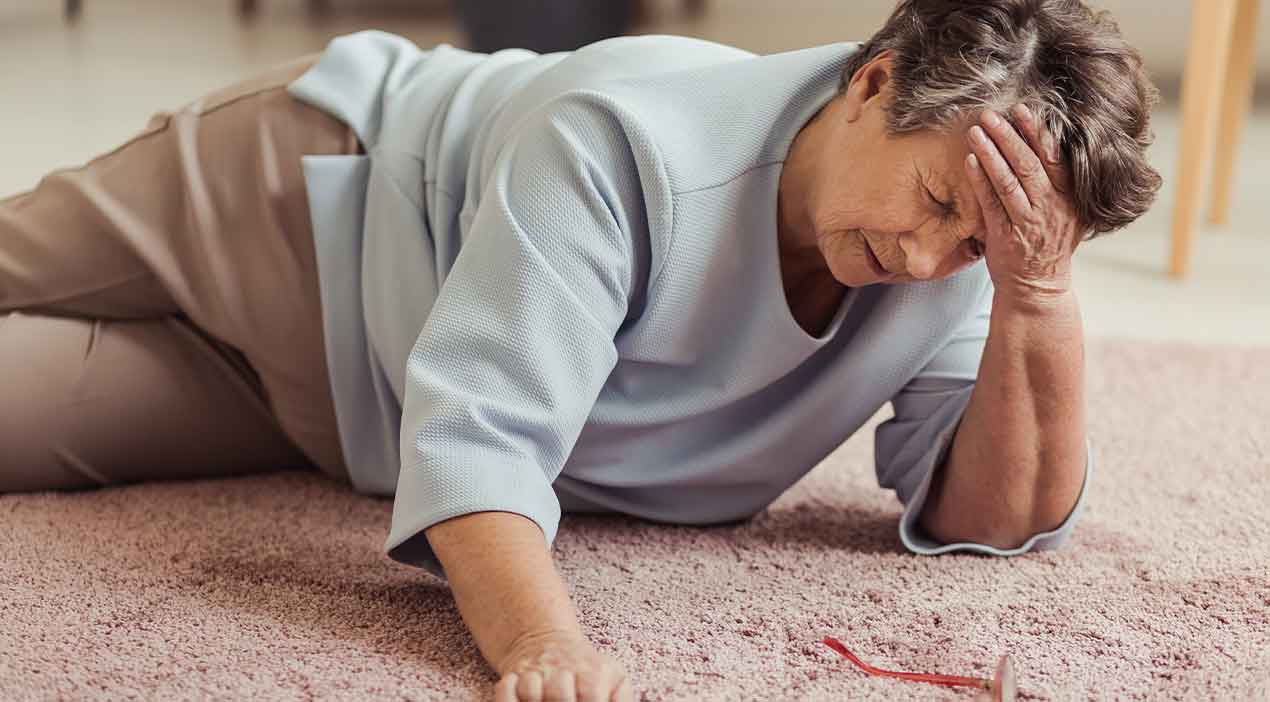Falls are the leading cause of injury—and accidental death—in adults age 65 and older.
The good news is that, in most cases, falls are preventable.
By understanding and avoiding the risks that contribute to falling, while also working on strengthening exercises with an occupational therapist, you can take the necessary steps to prevent injuring yourself from a fall.

Common causes of falling
There are many different reasons why you might be susceptible to getting hurt from an accidental stumble.
Sometimes you might fall because of personal factors, such as vision impairments and illnesses (known and unknown), side effects from medications, and more.
You can also fall as a result of environmental factors, including obstacles with where you’re walking (stairs, broken sidewalks, icy pathways), improperly fitting shoes that change your gait, and even mishaps with assisted walking devices like canes or walkers.
Even things out of your control—like when the family pet darts across the room as you’re walking through—can cause you to trip unexpectedly.
What you can do at home
The last place most people expect to fall is in the comfort of their home. However, there are many common household items that can increase your chance of a fall at home.
You can reduce your risk of falling by taking preventative measures:
- Remove unnecessary clutter from your home, especially from hallways, stairs, and spaces where you often walk.
- Move essential items you use every day to a lower shelf to avoid using chairs or step stools to reach for items store on high shelves.

- Check your bathroom for potential fall risks and install railings and grab bars inside your bathtub and next to your toilet.
- Make a clear pathway to wherever you go most often and move furniture to make your living space more open, for clear and easy access to each room.
Work with an occupational therapist
If you have fallen once, chances are you will develop a fear of falling again.
This can result in increased inactivity and a decline in overall health. They key is not to be afraid of falling again, but to work with an occupational therapist to avoid risk factors of falling.
An occupational therapist can help you:
- Evaluate your muscle strength, balance, and walking-style
- Practice exercises to increase your strength and balance
- Safely increase your physical conditioning through activities you enjoy
- Show you proper bending and climbing techniques for safe activity around your home
- Identify any additional factors that make you prone to falls and work with you and your primary care provider to find solutions
The fear of falling again shouldn’t slow you down. Keep moving, but in a safe and effective way as directed by an occupational therapist.
Make an appointment with your primary care provider
If you have fallen (or want to make sure you prevent future falls), consider making an appointment with your primary care provider to discuss fall prevention.
To make your appointment as productive as possible, before you go make lists of the following:
- All of the medications you are currently taking (as well as those prescriptions that your recently stopped taking)
- The instances when you have fallen or almost fallen (and details about how you stopped yourself from falling, such as with the help of someone else or by grabbing on to objects around you)
- Any current or previous health conditions
Your primary care provider will review your medical background and look for possible “red flags” that might make you susceptible to falling.
From there, they will then provide you with appropriate fall prevention tools and resources.
Logansport Memorial Hospital’s experienced physical and occupational therapy team helps patients develop, maintain, and restore maximum movement and function when those abilities have been threatened by aging, injury, disease, or environmental factors.
Our therapy team includes a specialist in vestibular rehabilitation who has expertise in helping treat conditions associated with dizziness, vertigo, and imbalance.
To learn more about the care our physical and occupational therapists can provide, call 574.753.1380.
You might also like:
- 5 Tips for Healthy Aging
- How Do You Know When You Need an Osteoporosis Screening
- 4 Ways to Keep Your Joints Healthy




